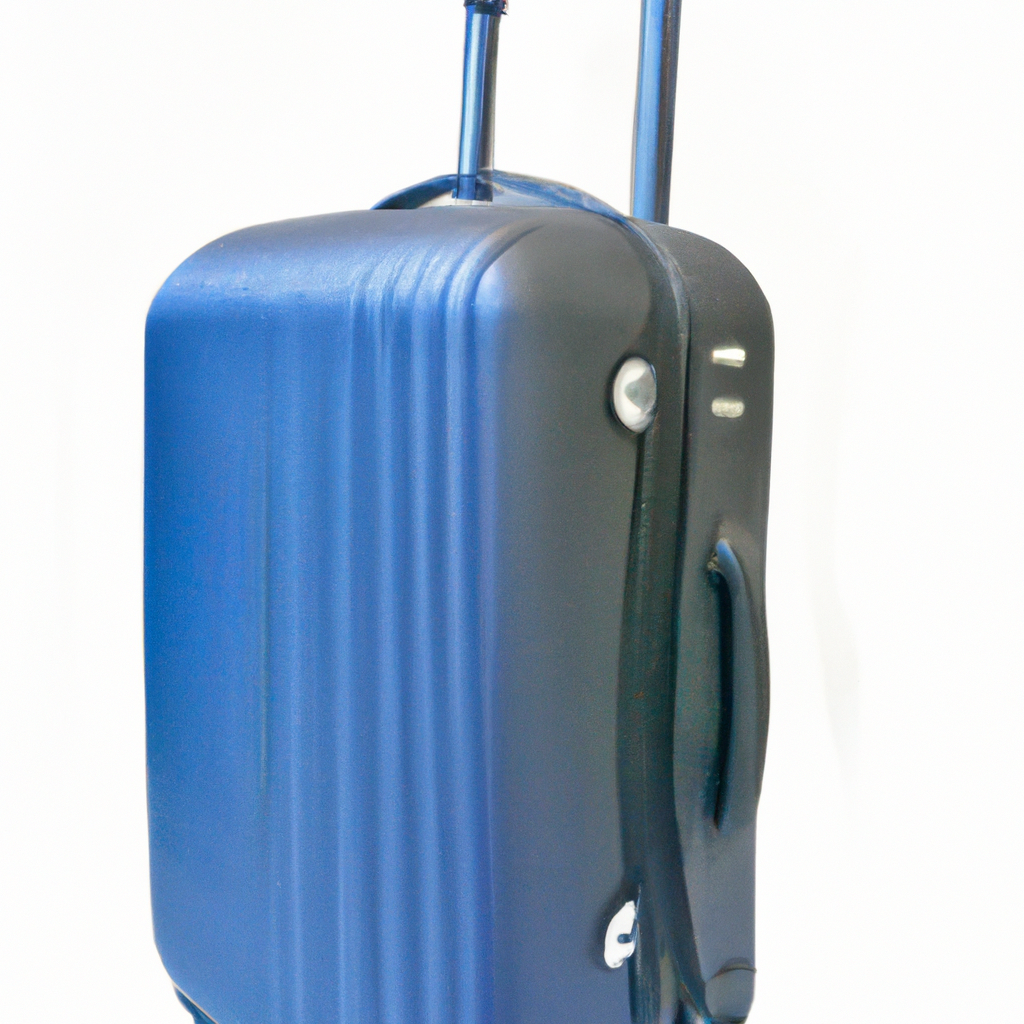In today’s fast-paced world, travel has become an integral part of our lives. Whether you’re jetting off for a business meeting or embarking on a leisurely vacation, mastering the art of packing efficiently is essential. One of the keys to stress-free travel is learning how to pack a carry-on luggage like a pro. In this comprehensive guide, we’ll explore the ins and outs of packing a carry-on bag to ensure you have everything you need without the hassle of checking in larger suitcases. Let’s dive into the world of smart packing!
Benefits of Packing Light
Traveling with just a carry-on luggage offers numerous advantages. It saves you time at the airport, reduces the risk of lost luggage, and ensures you have your essentials with you. Plus, it’s eco-friendly as it minimizes the carbon footprint associated with larger suitcases.
Choosing the Right Carry-On Luggage
Your choice of carry-on luggage can significantly impact your packing experience. We’ll discuss the types of carry-on bags available and help you pick the one that suits your needs.
When it comes to choosing the right carry-on luggage, you’ll want to consider factors like size, durability, and functionality. Most airlines have specific size restrictions for carry-ons, typically around 22 x 14 x 9 inches. Ensure your chosen bag meets these requirements to avoid potential issues at the airport.
Know Your Airline’s Carry-On Restrictions
Different airlines have varying rules and restrictions for carry-on luggage. Knowing these rules in advance can prevent stressful situations at the airport. We’ll provide tips on how to stay within airline guidelines.
Before you start packing, check your airline’s specific carry-on baggage policies. These policies can vary from airline to airline and even between different fare classes. Make sure you understand the size and weight restrictions, as well as any additional rules regarding personal items.
Making a Packing Checklist
Creating a packing checklist is essential for organized packing. We’ll guide you through the process of making a thorough checklist, ensuring you don’t forget any crucial items.
Before you start tossing items into your carry-on bag, take a moment to create a packing checklist. This simple yet effective tool can help you stay organized and ensure you don’t overlook essential items.
Packing Techniques
We’ll explore different packing techniques, including the age-old debate of rolling vs. folding, the use of packing cubes, and how to layer your clothes strategically to maximize space.
Roll vs. Fold: Which is Better?
The age-old debate of rolling vs. folding clothes when packing has passionate proponents on both sides. Rolling your clothes can save space and reduce wrinkles, making it a favorite technique for many travelers. This method is especially useful for lightweight clothing items like t-shirts and underwear.
Utilizing Packing Cubes
Packing cubes are a game-changer when it comes to efficient packing. These small, zippered organizers help separate and compress your clothing, making it easier to find what you need while saving space.
Use packing cubes to group similar items, such as tops, bottoms, and underwear. Not only does this make your bag more organized, but it also allows you to pack and unpack quickly. You can even color-code your cubes for added convenience.
Layering Clothes Strategically
Layering your clothes strategically can help you make the most of your carry-on luggage’s limited space. Start with your heaviest and bulkiest items, like jeans and jackets, at the bottom. Then, layer lighter clothing, such as t-shirts and dresses, on top.
Essential Clothing Items
Packing the right clothing items is crucial for any trip. Learn how to mix and match outfits, pack weather-appropriate attire, and choose versatile footwear.
When selecting clothing items for your carry-on luggage, think versatility. Opt for clothing that can be mixed and matched to create multiple outfits. Neutral colors like black, white, and gray are your best friends here, as they easily complement each other.
Toiletries and Personal Care
Discover the secrets of packing toiletries efficiently, including selecting travel-sized products and adhering to TSA liquid rules.
Packing toiletries in your carry-on bag requires careful consideration of airline rules and regulations. To avoid any issues at security checkpoints, follow these guidelines:
- Opt for travel-sized toiletries whenever possible. Many brands offer mini versions of their products, including shampoo, conditioner, body wash, and toothpaste.
- Remember the TSA’s liquid rules. All liquids, gels, and aerosols must be in containers of 3.4 ounces (100 milliliters) or less. Place these items in a quart-sized, clear, resealable bag.
- Invest in reusable travel containers. If you have specific products you can’t live without, transfer them into travel-sized containers to stay within TSA limits.
- Consider solid alternatives. Shampoo bars, solid toothpaste tablets, and soap sheets are TSA-approved and take up less space in your carry-on.
By adhering to these guidelines and packing your toiletries strategically, you can maintain your personal care routine without any hiccups during your travels.
Gadgets and Electronics
In this digital age, gadgets and electronics are travel essentials. We’ll share tips on maximizing space for devices and the importance of portable chargers and adapters.
Today, staying connected and entertained on the go is essential for most travelers. To make the most of your carry-on luggage space while accommodating your gadgets, follow these tips:
- Minimize gadgets: Only bring what you truly need. Consolidate devices whenever possible. For instance, a smartphone can serve as your camera, e-reader, and entertainment center.
- Use a cable organizer: Keep your cables and chargers tidy and accessible with a cable organizer or pouch. This prevents tangles and makes it easier to find what you need.
- Portable chargers: Invest in a portable charger to keep your devices powered up during long journeys. Look for one with multiple USB ports to charge multiple devices simultaneously.
- Universal adapters: If you’re traveling internationally, a universal adapter is a must. It ensures that your devices can plug into outlets worldwide without any issues.
By streamlining your gadget selection, keeping your accessories organized, and having a reliable power source, you can enjoy the convenience of technology without sacrificing valuable packing space.
Travel Documents and Essentials
Never leave home without the necessary travel documents. We’ll provide a checklist to ensure you have passports, tickets, visas, and emergency contact information.
Before you embark on your journey, create a checklist of essential travel documents and items. Here’s what you should include:
- Passport: Ensure it’s valid for at least six months beyond your travel dates.
- Visas: Check if your destination requires a visa, and if so, ensure you have the necessary approvals.
- Tickets: Print or store digital copies of your flight tickets and any other transportation tickets you may need.
- Hotel reservations: Have confirmation details for your accommodations readily available.
- Travel insurance: Carry documentation of your travel insurance coverage, including policy numbers and contact information.
- Emergency contacts: Create a list of emergency contacts, including family members and friends, and keep it with you at all times.
- Copy of your itinerary: Share your travel itinerary with a trusted friend or family member in case of emergencies.
Entertainment on the Go
Long flights can be enjoyable with the right entertainment. Explore options like books, e-readers, tablets, headphones, and accessories to keep you entertained.
Keeping yourself entertained during long flights or layovers is essential for a pleasant travel experience. Here are some entertainment options to consider packing in your carry-on luggage:
- Books: Physical books provide a classic way to pass the time. Choose a gripping novel, travel guide, or non-fiction book that suits your interests.
- E-Readers: If you’re an avid reader, an e-reader like a Kindle can store multiple books in one lightweight device, saving space in your bag.
- Tablets: Tablets offer versatility by allowing you to read e-books, watch movies, listen to music, and play games. Download your favorite content in advance for offline access.
- Headphones: Invest in high-quality headphones or earbuds for immersive entertainment. Noise-canceling headphones are ideal for drowning out background noise during flights.
- Accessories: Don’t forget to pack accessories like charging cables, a portable charger for your devices, and a comfortable neck pillow for added comfort.
Having a range of entertainment options ensures you can tailor your experience to your preferences, making long journeys more enjoyable.
Snacks and Hydration
Staying nourished and hydrated is vital during your journey. Learn about healthy snack choices and how to stay properly hydrated while flying.
In-flight meals may not always align with your dietary preferences or needs, so packing your snacks is a smart choice. Opt for healthy, non-perishable options like:
- Nuts and seeds: Almonds, walnuts, or pumpkin seeds provide protein and healthy fats.
- Dried fruits: Snack on dried apricots, cranberries, or mango for a sweet treat.
- Granola bars: Choose bars with whole grains, nuts, and minimal added sugar.
- Jerky: If you’re a meat eater, consider beef or turkey jerky for a protein boost.
- Fresh fruits: Apples, oranges, and grapes are excellent choices as they travel well.
Remember to stay hydrated during your flight. Bring an empty reusable water bottle and fill it after passing through security. Avoid excessive caffeine or alcohol, as they can contribute to dehydration.
By packing nutritious snacks and staying properly hydrated, you’ll arrive at your destination feeling refreshed and energized.
Security and Safety Measures
Protect your belongings and health with valuable tips on securing your valuables and taking necessary health precautions during your travels.
Ensuring the security and safety of both your belongings and yourself is paramount during your travels. Here are some key security and safety measures to consider:
- Locks and security cables: Invest in TSA-approved locks to secure your luggage. Additionally, consider using security cables to tether your bags together or to fixed objects in your hotel room.
- Anti-theft bags: Consider using anti-theft bags with features like RFID-blocking pockets and lockable zippers to protect your valuables.
- Health precautions: Stay informed about any health advisories or vaccinations required for your destination. Carry necessary medications, a basic first-aid kit, and personal protective equipment like masks and hand sanitizer.
- Emergency contact information: Keep a copy of your emergency contact information and important travel documents in a separate, easily accessible pouch.
By taking these precautions, you can minimize the risk of theft or health issues during your travels and focus on enjoying your journey.
Tips for Efficient Packing
Discover additional tips for efficient packing, such as minimizing bulky items, using vacuum-sealed bags, and leaving room for souvenirs.
Efficient packing is an art, and these final tips will help you master it:
- Minimize bulky items: Choose lightweight and compact versions of your belongings whenever possible. For example, opt for a travel-sized towel or a compact umbrella.
- Vacuum-sealed bags: If you need to pack bulky clothing items, vacuum-sealed bags can compress them, saving valuable space.
- Leave room for souvenirs: If you plan to pick up souvenirs during your trip, make sure to leave some extra space in your carry-on luggage. You can also pack a foldable tote bag for this purpose.
- Repack as you go: As you travel, periodically reassess your packing. Are there items you haven’t used? Consider whether you can leave them behind to lighten your load.
By implementing these efficient packing strategies, you can make the most of your carry-on luggage space while ensuring a stress-free and enjoyable journey.
Conclusion
Mastering the art of packing your carry-on luggage can transform your travel experiences. By following the tips and techniques outlined in this guide, you’ll not only become a savvy packer but also enjoy a stress-free journey.
…



 STEP 5: TECHNICAL LISTS OF HEADS OF POST
STEP 5: TECHNICAL LISTS OF HEADS OF POST










